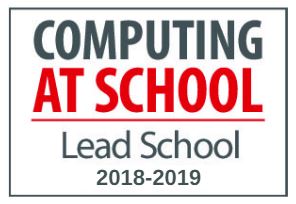More in this Section
Y9 Creative iMedia
 Head of Department
Head of Department
Mr J Evason
Organisation of the Subject
Students have 2 x 50 minute lesson each week in Year 9. Group sizes range from mid 20s to low 30s.
Key Concepts (The big ideas underpinning the subject)
- Understand how to interpret a client brief
- Understand the components of a Visual Identity and being able to create one suitable for a client brief
- Understand the composition of a digital product
- Understand how to produce digital assets
- Understand legislation that relates to digital assets
What will your child be learning?
This course is one of two mutually exclusive offerings from the Computing department in Year 9, (the other being Computer Science)
This course is one of two mutually exclusive offerings from the Computing department in Year 9 (the other being Computer Science).
- Digital graphics: in this unit students will analyse and review digital graphics. Students will investigate the design decisions that have been used to make graphics suitable for the target audience, including colour choices and composition.
- Digital Artefacts: In this unit students will discover how professionals create 3D animations, videos and audio products using a range of software packages. By completing this unit, students will gain a greater understanding of how this important creative field is used to make the media products that we consume.
Students learn to download and edit royalty-free video and audio files, then prepare them for use in a larger product. Additionally, they will plan and create their own original animations.
- Web design: in this unit students will learn how web development has progressed through time. Students will be required to plan and create a website for a client and meet the needs of the target audience. This will include creating a logo and strapline for a client, to raise the company profile and create brand awareness. Finally, students will go on to use a web authoring software package to create a multi-page website.
- Interactive Digital Multimedia Product (IDMP): in this unit students will develop confidence in planning, creating and testing an IDMP. This might be through creating a website or a kiosk, using RocketCake and PowerPoint respectively. These products will show a culmination of all the skills they have learnt previously and include a range of interactive content and digital media to respond to the demands of the client brief.
Key 'Learning Capacities' in this subject
- Be able to work both independently and collaboratively
- Develop the confidence to ask for help and answer questions in the classroom
- Be able to tinker and strategically discover solutions to problems
- Inspire students’ curiosity to learn more about the technological world around them
- Persevere with more challenging work
- Apply techniques learned in previous years and other subjects
How will your child be learning?
- Practical lessons
- Thinking creatively for themselves
- Paired work and group work
- Individual teacher interactions
- Teacher instruction / exposition
- Learner discussion
How will learning be assessed?
- Checks for understanding (CFU), including Do Now Activities (DNA), use of Mini Whiteboards (MWB), low-stakes quizzes.
- Formative assessments
- Homework
- Deep marking opportunities through the year
- Knowledge assessments
What can you do to support your child?
- Speak to them about what they have been doing in their lessons
- Discuss changes in technology and the impact on society
- Support them to develop healthy habits with the use of technology
- We ensure that the majority, if not all, of the software we use is freely available to students. If there is the capacity to make it available
Equipment needed for this subject
- Pen, pencil, rubber, ruler, calculator
Extra Curricular / Enrichment Opportunities
- A wide variety of enrichment resources and materials: https://ulverstonvictoria.sharepoint.com/sites/ComputingIdeas
- Bebras computational thinking competition in November (in class and at lunch)
- Coding Challenge in March (at lunch)
